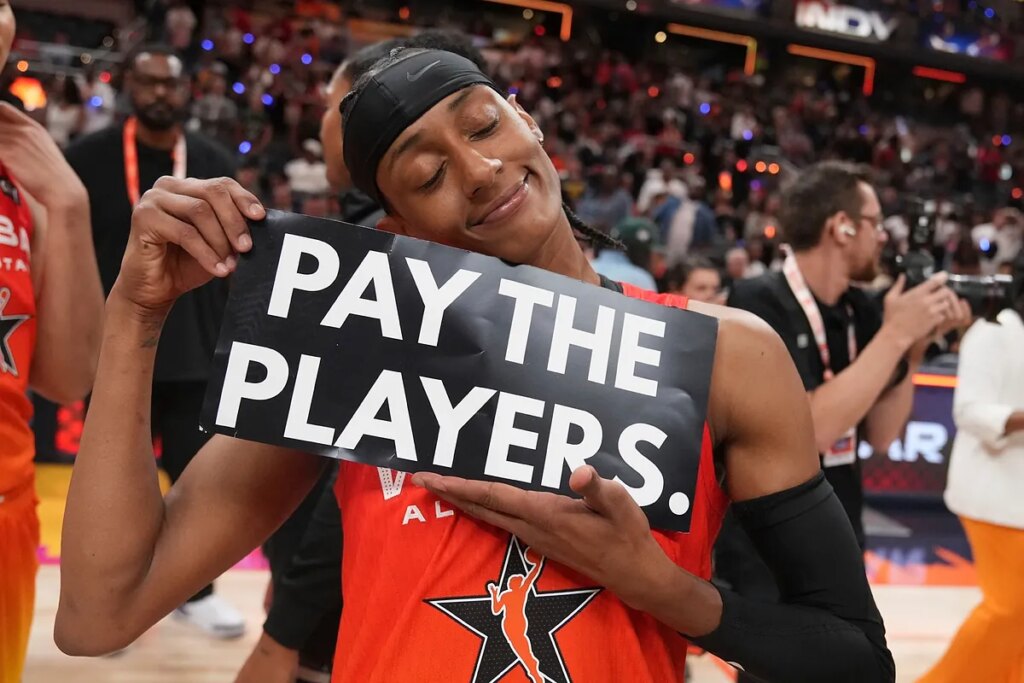The WNBA‘s star athletes have significantly ramped up their collective bargaining efforts and have brought heavyweight economic insight to the table.
In early July, the Women’s National Basketball Players Association (WNBPA) retained Claudia Goldin, a 2023 Nobel Prize winner in Economics, for an advisory role in negotiations with league officials over a new collective bargaining agreement (CBA), which is set to expire on October 31, 2025.
Goldin, a Harvard professor renowned for her groundbreaking work on gender wage disparities, is serving as an unpaid consultant.
Although she admits she’s “not a major-league [basketball] expert,” she offers a rigorous economic perspective on salary structures and revenue allocation, and her analytical acumen is already influencing the union’s strategy.
Alongside WNBPA executive director Terri Carmichael Jackson, Goldin helps “think and calm” the team when labor data and financial models come under scrutiny.
Her appointment follows the formation of a five-person advisory committee, also featuring former FBI agent W. Charles Bennett, labor lawyer Deborah Willig, media rights veteran Tag Garson, and NYU sports business professor David Cooper, assembled to guide the players through what they’ve dubbed a “defining moment” for women’s basketball.
Midsummer’s spotlight events have provided ideal platforms for these labor-focused efforts.
At the 2025 All-Star Game weekend in Indianapolis, WNBA players made a bold statement. All 22 All-Stars appeared in shirts declaring “Pay Us What You Owe Us.”
Fans responded with chants of “Pay them!” and attendees noted the message reverberated more loudly than any on-court moment.
Napheesa Collier, of the Minnesota Lynx and the game’s MVP, said the chants “gave me chills”. The union reported that more than 40 players joined CBA negotiation talks there, making it the most significant assembly in recent history.
These actions have taken place against a backdrop of explosive growth in the league.
The WNBA recently signed a $2.2 billion media rights deal and is adding six expansion teams, each commanding entry fees around $250 million, evidence of rising public interest and investor confidence.
Yet, even as national viewership surged by 23% and attendance jumped 26% year-over-year, players argue that their compensation still doesn’t reflect the league’s economic boom.
Goldin‘s economic analysis underscores that WNBA salaries, an average of about $127,000, are “embarrassingly low” relative to the average NBA salary of $10 million.
She estimates that WNBA players should be earning at least one-quarter to one-third of NBA pay, to match viewership ratios, yet current league payout structures fall far short.
League officials, though acknowledging the need for improvements, have expressed a cautious optimism.
Commissioner Cathy Engelbert stated she’s confident upcoming changes could be “transformational,” though she emphasized balancing player benefits with franchise sustainability.
Meanwhile, players continue to stress that equal pay isn’t just a financial request, but a matter of fundamental equity.
Chicago Sky center and WNBPA secretary Elizabeth Williams called a stronger CBA “a big part of the activism” and emphasized that economic equity is itself a form of social justice.
Read the full article here

